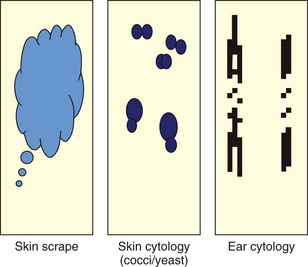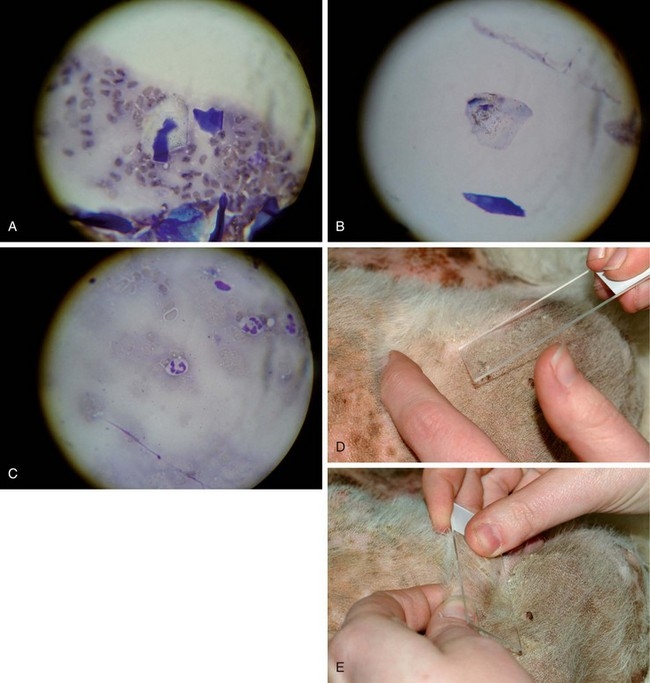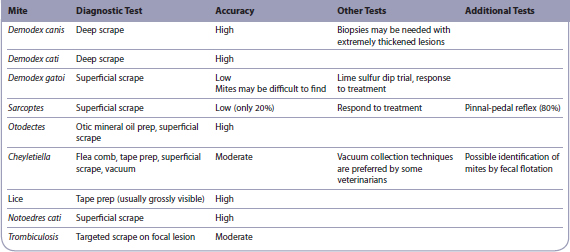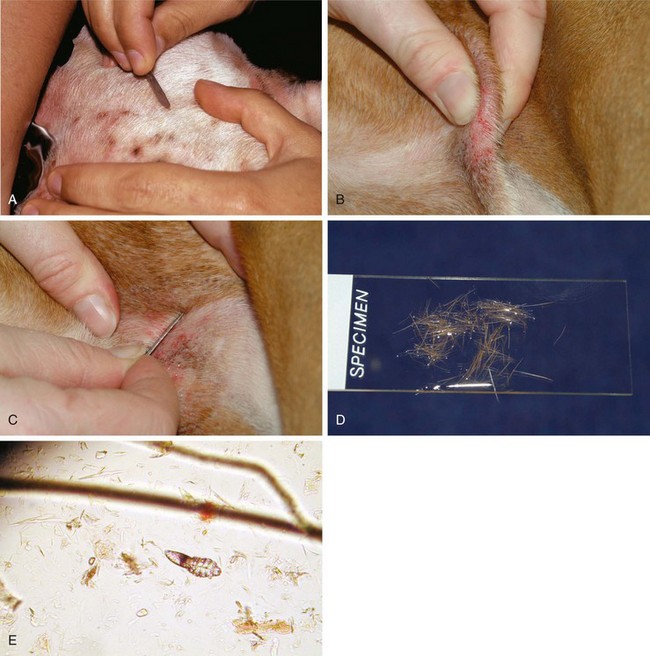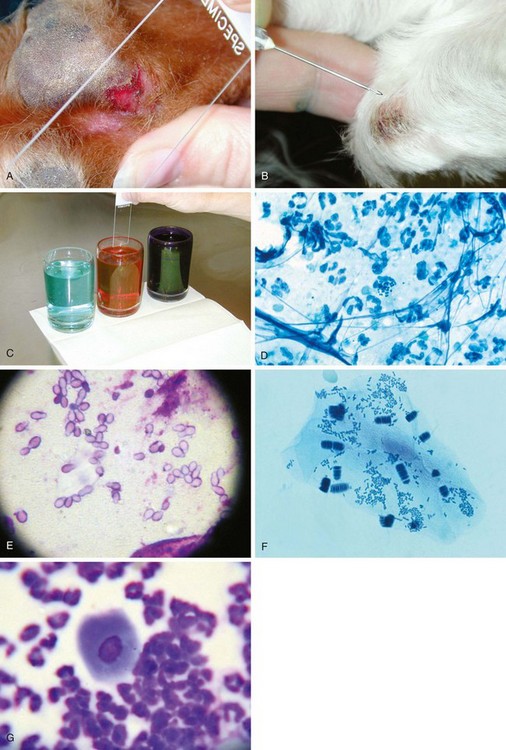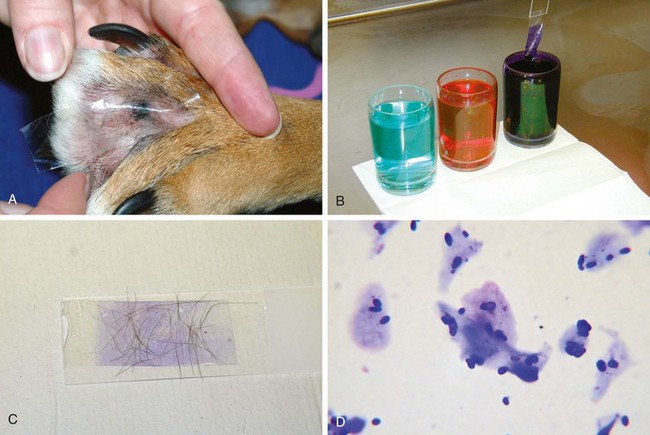CHAPTER | 2 Diagnostic Techniques
Diagnostic Testing
The dermatologic diagnostic minimum database includes skin scrapes, otic swabs, and cutaneous cytology. The goal should be to identify all secondary infections (e.g., pyoderma, demodicosis, dermatophytosis, otitis, Malassezia dermatitis, infectious pododermatitis), then formulate a diagnostic plan for identifying and controlling the underlying/primary disease (i.e., allergies, endocrinopathies, keratinization defects, and autoimmune skin diseases) (Box 2-1).
Skin Scrapes
Skin scrapes are the most common dermatologic diagnostic tests (slide #1 in the 3-slide technique). These relatively simple and quick tests can be used to identify many types of parasitic infections (Table 2-1). Although they are not always diagnostic, their relative ease and low cost make them essential tests in a dermatologic diagnostic minimum database.

















